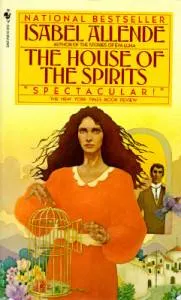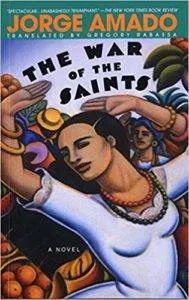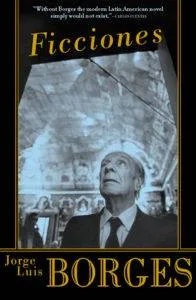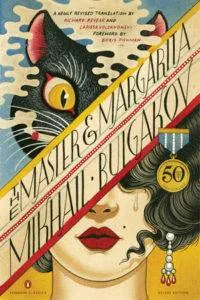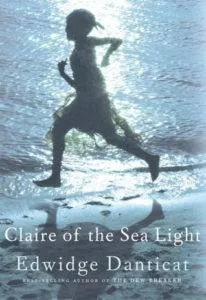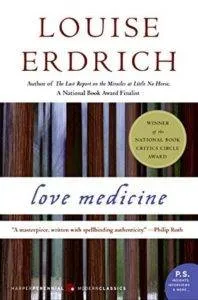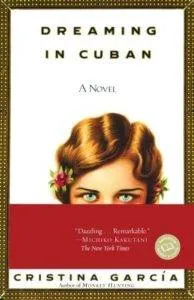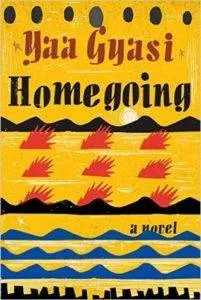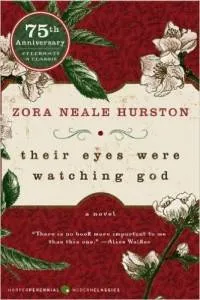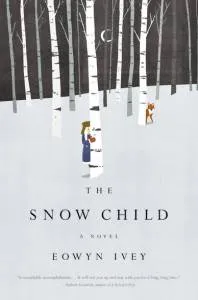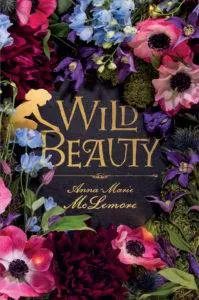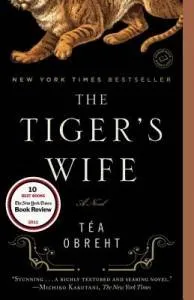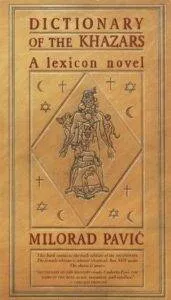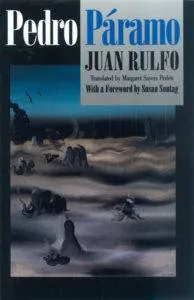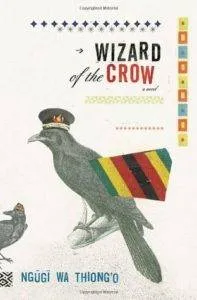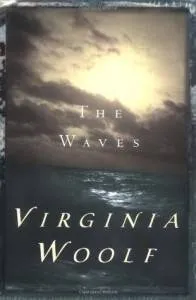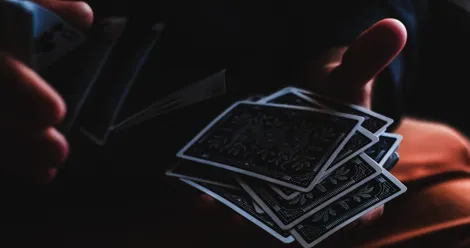
100 Must Reads Of Magical Realism
This list of the best magical realism books is sponsored by Penguin Random House Audio.
Listening to an audiobook can transport you to a galaxy far away, lead you to an ancient land full of magic, or help you time travel. From The World Lore: Monstrous Creatures and A Plague of Giants to William Shakespeare’s The Force Doth Awaken and The Bear and the Nightingale, the worlds created in science fiction and fantasy come to vivid life with audiobooks from Penguin Random House Audio.
There’s a tremendous amount of disagreement out there about what magical realism is, and in many ways, it’s easier to outline what it isn’t. Genres are tricky, fickle beasts, but some things magical realism is not include: urban fantasy, “the presence of magic in a realistic setting,” and fantasy or science fiction that happens to be very literary.
The conflicting definitions of magical realism emerge from the reality that what some scholars call “magical realism” is actually a mash-up of literatures that are difficult to categorize. Magical realism as a genre should be easily defined: a movement of Latin American authors, led by such greats as Jorge Luis Borges, Gabriel García Márquez, and Isabel Allende, that seems to mix myth and reality in order to battle back against the staunch realism of Western literature. It is inherently postcolonial.
Other cultures have had similar or influenced movements of magical realism. Authors such as Toni Morrison, Louise Erdrich, Yaa Gyasi, and Arundhati Roy tell the stories of the oppressed through this mix of reality and non-reality. The Western canon is obsessed with realism, but that’s not how so many live their lives: to so many, fantastic things happen everyday, both horrible things and incredible things, and the magical realist tales they tell may seem fantastic but are, inherently, grounded in what happened.
Mixed in the timeline with those novels are what came out of magical realism. In reality, these novels are usually surrealism or fabulism (for example, I would call Murakami’s novels surrealism), but many people call them magical realism books as well, so I usually refer to the phenomenon as the “magical realist mode” to differentiate it from the genre. As the postcolonial tales inflected postmodernism with a questioning of reality, authors all over began to push the boundaries in their novels. If the reader or main character asks, “Did that really just happen within the world of the novel?” and isn’t sure, it’s a moment of magical realism or surrealism.
In this list, I’ve included magical realism books out of all of those categories. Some of these books have just a single moment of surrealism and are by Western authors; others are surrealist or fabulist; others are classics of the magical realist genre itself, and their pages live and breathe magical realism. If you want to know why I’ve included a book in my list, or you know one that you’re sure I’ve missed, please feel free to reach out through the comments.
- Eva Luna by Isabel Allende. Allende is magical realism royalty. Eva Luna the storyteller tells her tales as currency to those who are kind to her, telling the story of her life and introducing the reader and listener to a wealth of incredible characters.
The House of the Spirits by Isabel Allende. Allende draws significantly from Márquez to tell the tale of three generations of the Trueba family, which begins with patriarch Esteban and the ethereal Clara, and continues to Blanca’s forbidden love, and Clara’s granddaughter, Alba, a beautiful and ambitious girl who will lead her family into a revolutionary future.
- The Stories of Eva Luna by Isabel Allende. Allende returns to Eva Luna. Eva’s lover asks her to tell him a story that she has never told anyone before, and she gives him 23 tales of love, vengeance, strong women, and compassion.
- Dona Flor and Her Two Husbands by Jorge Amado. Dona Flor’s gambling husband Vadinho dies during Carnival. His widow Dona Flor dedicates herself to her cooking school, and remarries to a kind pharmacist—but Vadinho isn’t gone for long.
- The War of the Saints by Jorge Amado
. The holy icon of Saint Barbara of the Thunder is due to arrive at the port of 1960s Bahia—but as the boat docks, the statue comes to life and disappears into the city towards a young woman in love whose aunt has locked her away.
- The Road to Tamazunchale by Ron Arias. Don Fausto is an old man who isn’t ready to die. He sets out on a journey that twists through time and space, with appearances from his teenage niece, a Peruvian shepherd, a group of mojados, and more.
- The Man Who Walked Through Walls by Marcel Ayme. A short tale about a magician, a nephew and adorer of Houdini, who needs to break people out of a prison.
- The Particular Sadness of Lemon Cake by Aimee Bender. Rose Edelstein bites into her mother’s homemade lemon cake on her ninth birthday to discover that she can taste the feelings of her mother through the cake—and they are desperation and despair.
- The Aleph and Other Stories by Jorge Luis Borges. Borges is one of the founders of the genre, and yet his magical realism is its own genre in of itself. This collection holds uncanny and haunting tales, from a vignette about personal identity to the mind of an unrepentant Nazi.
Ficciones by Jorge Luis Borges. This collection of short stories is often considered the height of Borges’s genius. It includes some of his greatest and most famous tales, including “The Library of Babel” and “The Circular Ruins.” These tales will make you think, and they will haunt you.
- Labyrinths by Jorge Luis Borges. This has some repeats from Ficciones, but is a collection of essays and stories from Borges that continue to make your mind spin.
- Dandelion Wine by Ray Bradbury. The sci fi king tells a semi-autobiographical story of a growing boy in a world of gold-fuzzed bees, dandelion wine, firecrackers, new sneakers…and a time machine.
The Master and Margarita by Mikhail Bulgakov. Bulgakov spins a devastating satire by writing a world in which Satan and his vodka-drinking, gun-toting cat, Behemoth, visit Stalin’s Soviet Union, as the Master, a great writer, and his lover, Margarita, struggle to survive.
- The Tartar Steppe by Dino Buzzati. This novel is devastatingly unreal. Giovanni Drogo arrives at a fort where all soldiers wait in earnest for a foreign invasion that never seems to come. Although not intending to stay, Drogo finds suddenly that years have passed…
- The Baron in the Trees by Italo Calvino. Cosimo, a young Italian nobleman in the 18th century, decides to climb into the trees and stay there forever as an act of rebellion. With the tone of fable, the reader is told tales of the mysterious Baron who lives in the trees—his life, his learnings, and his love affairs.
- If On A Winter’s Night A Traveler by Italo Calvino. Calvino’s famous novel is a wild experimental book in which two readers of the book itself are the main characters—and begin to fall in love.
- Explosion in a Cathedral by Alejo Carpentier. A historical novel of sorts, Carpentier’s tale of the French Revolution and rebellions of Caribbean islands twists time and shifts narrators to create an epic of rebellious ideals.
- The Kingdom of This World by Alejo Carpentier. The novel tells the story of the reign of King Henri-Christophe over Haiti through the eyes of the slave Ti-Noel in dreamlike prose.
Nights at the Circus by Angela Carter. Sophie Fevvers is part-woman and part-swan, star of the circus. But reporter Jack Walser is determined to uncover the truth behind her identity, and follows the circus on their tour through London, St. Petersburg, and Siberia.
- So Far From God by Ana Castillo. Sofia and her daughters Fe, Esperanza, Caridad, and la Loca deal with hardships and with love in the often eerie yet also comic town of Tome, New Mexico.
- Sacred River by Syl Cheney-Coker. Two hundred years after his death, Haitian emperor Henri Christophe appears in a dream to Tankor Satani, president of a fictional West African country, with instructions to continue his rule.
- A Man Was Going Down the Road by Otar Chiladze. Chiladze tells his own version of the tale of Jason and the Golden Fleece. The tale occurred in Colchis (the ancient name for Western Georgia), and Chiladze tells an allegory of Georgia using the setting of Greek myth and history.
- Hopscotch by Julio Cortázar. A metafiction tale, Hopscotch is a famously twisty book to read about Horacio Oliveria and the disappearance of his mistress, La Maga. The chapters are numbered, and you can read in order or follow Cortázar’s suggested order. Here’s a clue, though: if you follow his order, you’ll actually never read one of the chapters.
Claire of the Sea Light by Edwidge Danticat. People seem to die on Claire’s birthday every year. On the night he decides to give her up in the hopes of giving her a better life, Claire disappears. As they look for her, painful secrets and haunting memories will be revealed throughout the town.
- The Brief Wondrous Life of Oscar Wao by Junot Díaz. Díaz tells the story of Dominican lovesick nerd, Oscar. His family is haunted by the Fukœ—a curse that dooms them to tragedy, especially ill-starred love. Díaz immerses us in the lives of Oscar and his family, telling an epic of perseverance.
- The Mistress of Spices by Chitra Banerjee Divakaruni. Tilo is a young woman trained in the ancient art of spices, initiated in a rite of fire. Immortal, she travels to present day Oakland, California, where she opens a spice shop as an old woman. But how will her life and her choices shift when she falls in love?
- The Shell Collector by Anthony Doerr. Doerr’s stories throb with magic and beauty. His collection of short stories tells a tale of a housesitter who mourns a dead whale that washes onto the beach, or the wife of a hunter who discovers the ability to access the memories of the dead by touching their bodies.
- The Obscene Bird of Night by José Donoso. A gothic novel of the grotesque and of terror, the strange and often disturbing novel tells the tale of mutation and outcast, touching on the Chilean imbunche, a mythical creature that will leave you both terrified and bewildered.
- Things We Lost in the Fire: Stories by Mariana Enríquez. Enríquez tells a series of gothic, magical realist tales that will creep your socks off. I couldn’t sleep for a week afterwards, but it was worth it for the breathtakingly spooky and haunting social and political critiques that Enríquez tells with her incredible writing.
- The Last Report on the Miracles at Little No Horse by Louise Erdrich. Father Damien Modeste is the priest of the Ojibwe, who live on the remote reservation of Little No Horse. Troubled by the life of the possibly false saint Sister Leopolda, Father Damien struggles whether to tell the truth and thus risk exposing his own secret—that he was once a nun who ran.
- Love Medicine by Louise Erdrich
. Erdrich’s novel tells the story of two families, the Kashpaws and the Lamartines, a portrait of many generations of men and women going through a whirl of anger, desire, and healing.
- Tracks by Louise Erdrich. Erdrich tells a tale of Native American tribes struggling to keep what little remains of their land in North Dakota.
- The Law of Love by Laura Esquivel. This novel comes with music. A Mexican astroanalyist in the 23rd century searches her past lives for her lover. The book comes with a CD—as you read, the music in the CD “releases” the past lives, and you watch the reincarnations unfold in artwork.
- Like Water for Chocolate by Laura Esquivel. Tita is the youngest daughter of the all-female De La Garza family in turn-of-century Mexico. She has been forbidden to marry, condemned by tradition to look after her mother until she dies. But with the magic she pours into her food, she seduces Pedro, who then marries her sister in desperation.
- Everything is Illuminated by Jonathan Safran Foer. A young man visits the Ukraine with a photo in his hand to search for the woman who saved his grandfather from the Nazis 50 years earlier.
- American Gods by Neil Gaiman. “Fantasies” have their magical realist moments too, and one of my all-time favorites is when Shadow thinks as hard as he can of snow. Immigrants have brought their old gods—Odin, Anansi—over to America for years, but now they have a challenger, the new gods—Media, railroads, highways. Shadow Moon is a man caught in the middle of it all.
- The Ocean at the End of the Lane by Neil Gaiman. A man stops by an old farmhouse after a funeral and finds himself staring into a pond that, when he was a child playing with Lettie Hempstock, she insisted was an ocean…
Dreaming in Cuban by Cristina Garcia. Celia del Pino’s family is divided by both politics and geography by the Cuban revolution. García’s novel tells of Celia, her husband, daughter, and grandchildren, spanning the mid-1930s to 1980, and tells a tale of Cuba itself in the process.
- The Nose by Nikolai Gogol. Gogol’s iconic short story is a brilliant satire of the Soviet military and social structure. A deputy inspector wakes up one morning to find that his nose is gone. Running out to find it, he finds that his nose has taken on life of its own.
- The Tin Drum by Gunter Grass. On his third birthday, Oskar decides to stop growing. He tells the stories of his life that ranges from the long nightmare of the Nazi era and into his adventures in post-war Germany.
- The Monsters of Templeton by Lauren Groff. An earlier novel from the author of Fates and Furies, this one edges its way down the tightrope between fantasy and reality. Willie Upton returns to the town of her childhood after a disastrous affair with her professor, on the same night that the corpse of a monster surfaces in the town lake.
- Homegoing by Yaa Gyasi
. Gyasi tells the story of two half-sisters, Effia and Esi, in 18th century Ghana, and the generations of descendants that follow them. It’s a gorgeous debut that spans decades to tell a historical and family epic, with unforgettable characters and nightmares of fire and water that haunt generations.
- Winter’s Tale by Mark Helprin. Peter Lake is an orphan and mechanic who attempts to rob a mansion on the Upper West Side of New York in the midst of a cold winter. He finds that Beverly Penn is actually home, and dying.
- Exit West by Mohsin Hamid. Hamid tells the love story of Nadia and Saeed. They fall in love as their city explodes. They begin to hear whispers about doors that are opening all over the world, and whisking people far away from where they began, doors that refugees are taking, and that will change their world for good.
- Chocolat by Joanne Harris. Nothing has changed in the conservative town of Lansquenet for years—until the arrival of Vianne Rocher and her chocolate shop. Rocher’s chocolate seems to come with uncanny perceptions and cures into their troubles. Make sure to have some chocolate with you when you read this one—the descriptions will make your mouth water.
- The River King by Alice Hoffman. In the town of Haddan, people tend to stick to what they know. Their own side of town, their own class, their own clique. But when a body is discovered in the river behind the school, a local policeman’s investigation will change everything.
Their Eyes Were Watching God by Zora Neale Hurston. When Janie, at sixteen, is caught kissing shiftless Johnny Taylor, her grandmother swiftly marries her off to an old man with sixty acres. Janie endures two stifling marriages before meeting the man of her dreams, who offers her a packet of flowering seeds.
- The Buried Giant by Kazuo Ishiguro. This brilliant fantasy from our newest Nobel Laureate tells a magnificent love story of an older couple who set out into a dangerous world of witches and knights to find their son. Digging into themes of remembrance and forgetting, and of what it means to love someone for a lifetime, The Buried Giant is a breathtaking epic of a tale that can’t be missed.
- Never Let Me Go by Kazuo Ishiguro. Kathy looks back at her years at Hailsham, a private school in the English countryside where she and her friends were taught that they were isolated because they were so special. As she digs into a seemingly idyllic past, dark cords begin to emerge, and Kathy has to confront the secrets that have always hung just behind the curtains.
- The Snow Child by Eowyn Ivey
. Drawing on fairy tale and folklore, this novel set in 1920 Alaska tells of a childless couple who are drifting apart, until one joyful night, they playfully build a child out of snow…
- Forest Dark by Nicole Krauss. The newest novel by the author of The History of Love tells the stories of Jules Epstein, a man who recently began giving things away, and Nicole, a well-known novelist who hopes that the hotel she often stayed in as a child will rekindle something within her. Kafka makes an appearance in this haunting novel about the construction of the self and the spaces within us.
- The Bleeding of the Stone by Ibrahim al-Koni. A wild sheep called the moufflon survives in southern Libya, where only Asouf, a bedouin, knows where to find them. But hunters have come to the desert, and now both Asouf and the moufflon are under threat. The novel combines ecological issues with a depiction of desert life and resistance.
- Search Sweet Country by Kojo Laing. Laing paints a portrait in words of Accra, the capital city of Ghana, and its people, plot lines drifting from character to character, all the stories bound by the wanderings of a beggar named Beni Baidoo, who is seeking money and land to found his own village, and wants the characters to join him.
Magic for Beginners by Kelly Link. Link tells a series of stories that explore everything from a young man’s anxieties about the future, which mainly center around zombies, to a house haunted by hordes of rabbits.
- Chronicle of a Death Foretold by Gabriel García Márquez. 27 years earlier, a murder was committed. Now, a man investigating the events wants to know: if everyone in town knew it was going to happen, why did no one stop it? His interviews expand the world of the village into a twisting, complex web of happiness, grudges, and heartaches.
- Love in the Time of Cholera by Gabriel García Márquez. Florentino Ariza and Fermina Daza fell in love when they were young, but Fermina marries someone else. After 50 years, 9 months, and 4 days, Florentino attends her husband’s funeral, determined to win back her heart.
- One Hundred Years of Solitude by Gabriel García Márquez. Márquez’s novel is probably the classic of the magical realist genre. It’s an epic that tells the story of the rise and fall of the town of Macondo through the history of the Buendía family. The fantastic swirls through this tragicomic epic of life and death, riches and poverty, triumph and tragedy.
- Life of Pi by Yann Martel. Piscine Molitor “Pi” Patel, a Tamil boy from Pondicherry, is on a huge ship with his family when it wrecks. He is left on a lifeboat with a bengal tiger. Life of Pi is a tale about hope and storytelling that will leave you thinking about what it takes to survive.
- When the Moon Was Ours by Anna Marie McLemore. Sam makes moons. Roses grow out of Miel’s wrist. They have been best friends since they were small, but now the Bonner girls, four beautiful sisters rumored to be witches, are threatening to use all their secrets if Miel won’t give them the roses that they’re convinced will make anyone fall in love with them.
Wild Beauty by Anna Marie McLemore. Every generation of the Nomeolvides family has five sisters. They grow flowers as part of the garden that is La Pradera. It protects them, and allows them to grow without being labeled witches. But it also does not allow them to leave. And for generations, the lovers of the Nomeolvides family have disappeared. But one day, a boy comes out of the soil, a boy named Fel. And the secret he brings will change their lives forever.
- The Girl Who Could Silence the Wind by Meg Medina. Sonia Ocampo was born on the night of a terrible storm in Tres Montes. Now, her town believes that she has protective powers, but she knows she doesn’t. It will take leaving home to find out what she is really capable of.
- The Night Circus by Erin Morgenstern. A fierce competition between two young magicians, raised and trained since childhood by their wizard instructors, rages through Le Cirque des Reves. Moments of ambiguity and dreams paint themselves in rich color as you drift through circus acts and masterful illusions.
- Beloved by Toni Morrison. In Morrison’s famous novel, Sethe was born a slave and escaped to Ohio, but eighteen years later she is still not free. She has too many memories of Sweet Home, the beautiful farm where so many hideous things happened. Her new home is haunted by the ghost of her baby, who died nameless, and whose tombstone is engraved with a single word: Beloved.
- Paradise by Toni Morrison. Morrison tells the tale of two promised lands—the patriarchal community of Ruby, and the small household of women who have run from death, despair, and heartache to take shelter. Nine men of Ruby direct their rage, pain, and terror, at those women in the opening scene of mass violence—but the rest of the novel explores what led to that moment.
- Song of Solomon by Toni Morrison
. In this classic, Morrison tells the coming-of-age of Milkman Dead, who was born shortly after a neighborhood eccentric hurled himself off a rooftop in a vain attempt at flight. For the rest of his life, Milkman, too, will be obsessed with the need to fly.
- Hard-Boiled Wonderland and the End of the World by Haruki Murakami. A dual narrative—one strand Tokyo, one strand the “walled Town.” Neurological enhancement. Encryption. Shadows. Unicorns? Murakami makes you question what identity really means in this surreal tale.
- Kafka on the Shore by Haruki Murakami. Kafka Tamura runs away from home to search for his missing mother and sister, as well as to escape an oedipal prophecy—an aging man named Nakata is drawn to him for reasons he can’t put a finger on. Cats talk and fish fall from the sky in one of Murakami’s many classics.
- The Wind-Up Bird Chronicle by Haruki Murakami. Originally published in three volumes, The Wind-Up Bird Chronicle begins as a young man named Toru Okada in a Tokyo suburb searches for his wife’s missing cat. Soon he finds himself looking for his wife as well in a netherworld that lies beneath the placid surface of Tokyo, encountering a bizarre group of allies and antagonists.
- Pale Fire by Vladimir Nabokov. Scholar Charles Kinbote writes a novel in the footnotes to his beloved poet John Shade’s 999-line poem, telling of his escape from Zembla as a deposed king, his possible identities twisting and shadowy as the footnotes get darker.
- The Tiger’s Wife by Téa Obreht
. Natalia, a young doctor, arrives at an orphanage, still reeling after her grandfather left home to die alone. As she tries to discover the secrets of the orphanage, she also digs deep into the stories her grandfather told her as a child, trying to figure out what would make his choices make sense.
- A Tale for the Time Being by Ruth Ozeki. A novelist named Ruth finds a Hello Kitty lunchbox washed ashore and full of mysteries. A bullied teenager named Nao in Tokyo considers suicide, but wants first to document the life of her great-grandmother. Their lives are fated to interweave.
- The Famished Road by Ben Okri. Azaro is an abiku, a spirit child who exists between life and death. When, on his birth, he is nearly called back to the land of the dead, his parents give everything to save their child. The novel is dominated by the tension between the land of the living and the carefree kingdom of the spirits.
- Songs of Enchantment by Ben Okri. The adventures of Azaro continue in this sequel to The Famished Road.
- Infinite Riches by Ben Okri. This is the third in the Famished Road trilogy by Ben Okri telling of the tensions between the lands of the living and dead through the eyes of Azaro.
- The Third Policeman by Flann O’Brien. O’Brien tells an absurdist and darkly comic tale about a narrator who has botched a robbery and murder, and who now finds himself in a bizarre and frightening, uncanny world that includes a two-dimensional police station and 3 eccentric policemen.
- The Icarus Girl by Helen Oyeyemi. Jess Harrison is visiting Nigeria for the first time with her parents when she makes her first real friend, a girl named TillyTilly. But as the visits become more disturbing, Jess begins to realize that she might not know TillyTilly all that well after all.
- Snow by Orhan Pamuk. Pamuk tells the tale of a poet named Ka who goes to Kars ostensibly to investigate an outbreak of suicide among teenage girls, but mostly to visit his friend and long-time love Ipek, who has recently divorced.
- The White Castle by Orhan Pamuk. Both a novel of historical fiction and on the strange, shifting riddle that is identity, The White Castle tells the story of a young Italian scholar taken prisoner on his way to Naples and enslaved to a man who is his exact double.
The Dictionary of the Khazars by Milorad Pavić. A twisting, almost indescribable lexicon novel, this book is an imagined dictionary telling the story of the Khazars, a people who once flourished, but later disappeared. It includes a book printed in poison ink, mirrors that can kill, a princess who speaks in poems, and people who hunt through dreams. There are two editions, identical except for the space of 17 crucial lines.
- Geographies of Home by Loida Maritza Pérez. Iliana, a first-generation Dominican American woman, returns home from college to discover that her family is falling apart. She confronts the superstitions, joys, anger, and desperation that come from a life caught between two cultures.
- Mumbo Jumbo by Ishmael Reed. Reed mixes portraits of historical figures and fictional characters with sound bites on subjects ranging from ragtime to Greek philosophy to satirically deconstruct Western civilization and comment on society.
- …And the Earth Did Not Devour Him by Tomas Rivera. In a series of vignettes that unite to create one tale, Rivera tells of poverty and the struggles of migrant workers, digging into their sorrows, their hopes, and their faith.
- The God of Small Things by Arundhati Roy. Roy digs deep into a family in Kerala, from lonely mother Ammu, who fled an abusive marriage, to their beloved uncle Chacko. When Chacko’s English ex-wife and daughter visit, the twins Esthappen and Rahel will discover how much can change in a day, and learn the consequences of tampering with the laws that “lay down who should be loved and how. And how much.”
- Pedro Páramo by Juan Rulfo
. When Juan Preciado’s mother dies, her only wish is that Juan visit the village where she was born and make Pedro Páramo, his father, pay for abandoning them. Rulfo’s short tale is a surreal picture of the village, now a ghost town.
- Haroun and the Sea of Stories by Salman Rushdie. Young Haroun sets out on an adventure to heal the source of the sea of stories, which has been poisoned. On the way, he meets enemies who are determined to drain the sea of its powers of tell tales.
- Midnight’s Children by Salman Rushdie. Saleem Sinai is born at the stroke of midnight at the precise moment of India’s independence, along with 1,001 children who all have special gifts. Saleem is telepathically linked to these children, but his gift will have consequences—his life is irrevocably tied to that of his motherland.
- Swamplandia! by Karen Russell. Ava Bigtree is the proud daughter of an alligator-wrestling dynasty. But as a competitor named World of Darkness encroaches on their customers, Ava is left to navigate the landscape herself, as her sister Ossie falls in love with a man who may or may not be a ghost, her big brother runs away, and Ava’s father disappears, leaving her alone with 98 gators.
- Of Bees and Mist by Erick Setiawan. Meridia has recently married Daniel, and is excited to move in with his family, as her own childhood was lonely. But as she struggles to adapt to her new life, she uncovers dark secrets both from her own and her new family’s histories that challenge her love, her courage, and her sanity.
- Weaving Water by Ryhaan Shah
. Neela is a girl born on a ship at sea, and put into the arms of a childless couple on their way to the sugar plantations of British Guiana. As she grows, she’s heard the talk of the goddess Ganga and its connections to her birth at sea. Shah tells the tale both of Neela and of the community around her, of slavery and indentureship, and of growing racial conflict.
- White Teeth by Zadie Smith. Smith’s most famous novel is a epic tale of two North London families, connected by the friendship of Archie Jones and Samad Iqbal, who served together in World War II.
- The Bonesetter’s Daughter by Amy Tan. Ruth Young and her mother LuLing have always struggled with their relationship. But when LuLing gives Ruth some of her writings, worried about the forgetfulness of old age, Ruth discovers a side of her mother that she never knew.
Wizard of the Crow by Ngũgĩ wa Thiong’o. In a tale both comic and epic, Thiong’o’s goal in this novel is, in his own words, “to sum up Africa of the twentieth century in the context of two thousand years of world history.” The novel dramatizes with humor and insight a battle for control of the souls of the ‘Free Republic of Aburĩria’.
- The Palm-Wine Drinkard by Amos Tutola. Tutola draws on Yoruba oral folktale tradition to tell the story of a devoted palm-wine drinker through a fantastic adventure.
- The Hummingbird’s Daughter by Luis Alberto Urrea. Urrea tells the story of the Saint of Cabora, a girl named Teresita who wakes up from a dream where she has died—except she actually has died, and now she has risen with the power to heal.
- Big Fish by Daniel Wallace. Edward Bloom has told tall tales all his life, and his son has idolized him through his stories. Now, his son tells the true story of Bloom’s life through the few facts he knows, and will begin to understand the true nature of his father’s successes and failures.
- Orlando by Virginia Woolf
. A love letter to Woolf’s lover Vita Sackville-West, this novel tells the tale of the bisexual Orlando, who goes to sleep and wakes up a woman. Woolf uses ingenious satire to show how gender roles affect someone’s character—beginning in Elizabethan England, and ending in 1928.
- The Waves by Virginia Woolf. The Waves is a magnificent, epic of beautiful prose that traces the lives of six childhood friends, who in their young adulthood unite around the unseen figure of a man named Percival.
- Through the Arc of the Rainforest by Karen Tei Yamashita. Yamashita tells a tale of a group of Japanese people who emigrated to Brazil in the first decades of the 20th century, seeking to found communities where their Christian and Japanese values could flourish.
- Land of Love and Drowning by Tiphanie Yanique. In the early 1900s, as the Virgin Islands are transferred to American rule, an important ship sinks into the Caribbean. Two sisters and their half-brother, now orphans, all unusually beautiful, and each in possession of their own kind of magic, must try and face an uncertain future.
- How to Escape from a Leper Colony by Tiphanie Yanique. A collection of stories set mostly in the US Virgin Islands, Yanique presents a loving portrait featuring the fantastic and the painfully real.
What are your favorite magical realism books? Hit the comments with your recs! And, if you’re just getting started with magical realism books and want to know where to start, we got you covered.



